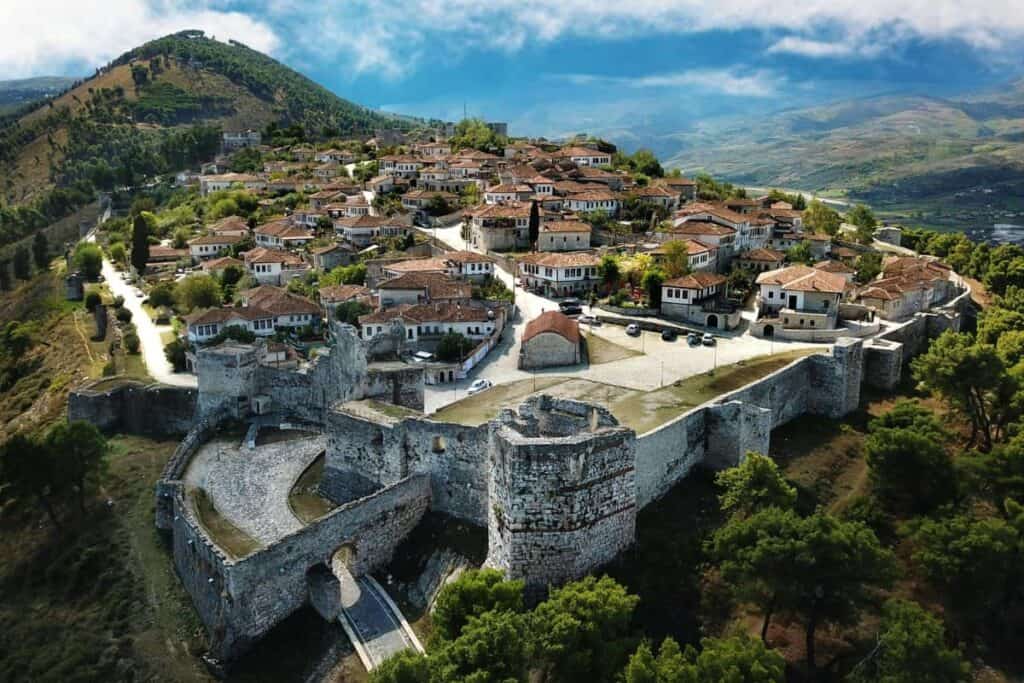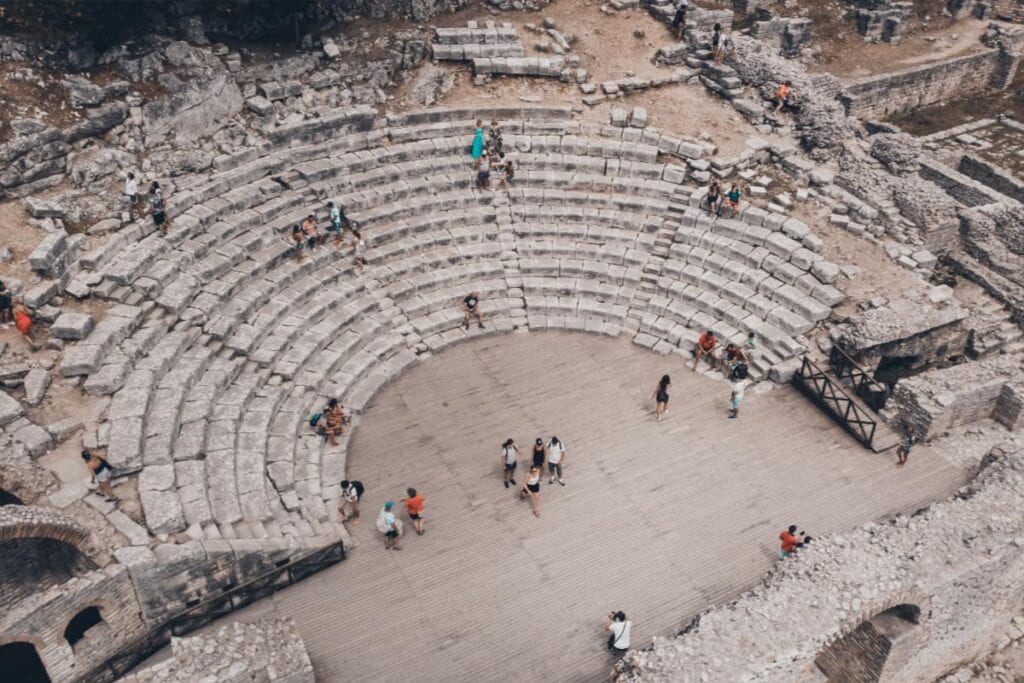Immerse Yourself in Albania’s Rich Cultural Heritage
Albania’s unique history and diverse traditions make it a fascinating destination for cultural travelers. From ancient ruins to living traditions, this guide highlights the best cultural tours across the country to deepen your connection with its heritage.
1. Discovering Gjirokastër: The City of Stone
What to Explore:
- The Gjirokastër Castle, which houses the National Museum of Armaments and offers breathtaking views of the Drino Valley.
- The Ethnographic Museum, located in the house where former dictator Enver Hoxha was born.
Tour Highlights:
- Guided walks through the city’s cobblestone streets, learning about its Ottoman-era architecture.
- Participation in traditional craft workshops, such as weaving and embroidery.
Why It’s Unique: Gjirokastër’s well-preserved stone houses and UNESCO World Heritage status make it a cultural treasure.
Tip: Visit during the Gjirokastër Folk Festival to experience live polyphonic singing and dance.
2. Berat: A Window into Albania’s Ottoman Past
What to See:
- The Mangalem District, known as the “City of a Thousand Windows” for its cascading Ottoman-style houses.
- The Onufri Iconographic Museum, featuring stunning religious art by Albania’s most renowned painter.
Tour Highlights:
- Cultural tours often include stops at local wineries to sample Puls and Shesh i Zi, two regional wine varieties.
- Opportunities to dine with local families and learn traditional recipes.
Why It’s Special: Berat blends history and hospitality, offering visitors a chance to connect with its people and stories.
Tip: Take a guided sunset tour for the best photo opportunities.
3. Kruja: The Spirit of Albanian Resistance
What to Visit:
- The Kruja Castle, a stronghold of national hero Skanderbeg during his resistance against the Ottoman Empire.
- The Skanderbeg Museum, showcasing artifacts from Albania’s medieval history.
Tour Highlights:
- Guided tours often include a visit to the Old Bazaar, where you can shop for traditional items like silver jewelry and handwoven rugs.
- Storytelling sessions about Albania’s fight for independence.
Why It’s Important: Kruja is a symbol of Albanian identity and resilience, making it a must-see for history enthusiasts.
Tip: Combine a visit to Kruja with a hike in the nearby Sari Salltik Mountain.
4. Exploring Butrint: The Ancient City of Civilizations
What to See:
- The amphitheater, baptistery, and Venetian Tower, among other ruins at this UNESCO World Heritage Site.
Tour Highlights:
- Expert-led tours that explain the layers of history, from Greek to Roman to Byzantine.
- Photography walks focusing on the site’s unique combination of archaeology and natural beauty.
Why It’s Fascinating: Butrint offers a journey through time, showcasing Albania’s role as a crossroads of civilizations.
Tip: Visit early in the morning to avoid crowds and enjoy the tranquil atmosphere.
5. The Traditions of Theth and Valbona
What to Experience:
- The Lock-In Tower in Theth, where you’ll learn about the Kanun, Albania’s ancient code of law.
- Traditional music and dances performed by locals in the Valbona Valley.
Tour Highlights:
- Guided hikes that include storytelling about the region’s folklore and legends.
- Farm visits where you can participate in activities like cheese-making.
Why It’s Unique: These tours combine cultural education with outdoor adventure, offering a deep dive into Albania’s highland traditions.
Tip: Stay in a guesthouse to experience the warm hospitality of the locals.
6. Tirana: A Journey Through Albania’s Modern History
What to See:
- The National History Museum, which offers an overview of Albania’s ancient and modern history.
- Bunk’Art 1 and 2, two museums set in Cold War-era bunkers that showcase Albania’s communist past.
Tour Highlights:
- Street art tours that explore the vibrant murals and installations in Tirana’s neighborhoods.
- Visits to the Pyramid of Tirana, a controversial relic of the communist era.
Why It’s Engaging: Tirana’s evolving identity as a modern capital makes it a dynamic cultural destination.
Tip: End your tour at Pazari i Ri, where you can shop for local crafts and enjoy Albanian street food.
7. Përmet: A Celebration of Albanian Hospitality
What to Do:
- Attend cooking demonstrations of traditional dishes like gliko and përshesh.
- Participate in wine and raki tastings, accompanied by local stories and songs.
Tour Highlights:
- Cultural tours in Përmet often include a visit to the Bënja Thermal Baths and Langarica Canyon for a blend of relaxation and exploration.
Why It’s Memorable: Përmet’s emphasis on food and hospitality offers a truly immersive cultural experience.
Tip: Visit during local festivals to witness traditional music and dance performances.
8. Durrës: A Blend of History and Modernity
What to Explore:
- The Durrës Amphitheater, the largest Roman amphitheater in the Balkans.
- The Archaeological Museum, featuring artifacts from ancient Illyria and Rome.
Tour Highlights:
- Walking tours that include stops at modern art galleries and local seafood restaurants.
- Insight into how Durrës balances its ancient heritage with contemporary development.
Why It’s Special: Durrës is a living example of Albania’s ability to honor its past while embracing its future.
Tip: Take a seaside tour to explore the city’s beautiful coastline.
Tips for Choosing a Cultural Tour in Albania
- Look for Local Guides: They provide authentic insights and personal stories.
- Combine Experiences: Opt for tours that blend cultural exploration with activities like hiking or cooking.
- Book in Advance: Popular cultural tours, especially in summer, can fill up quickly.


